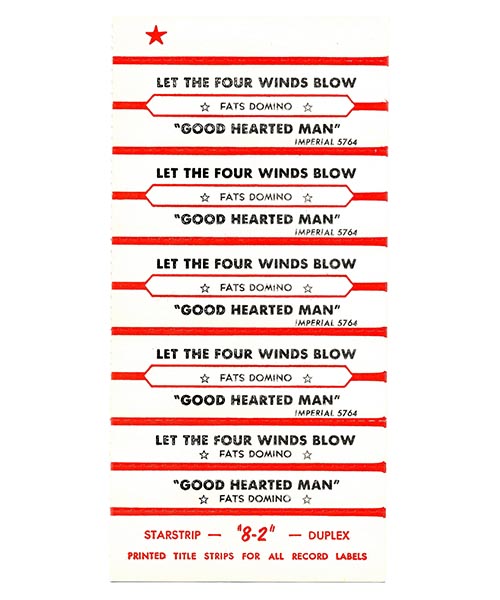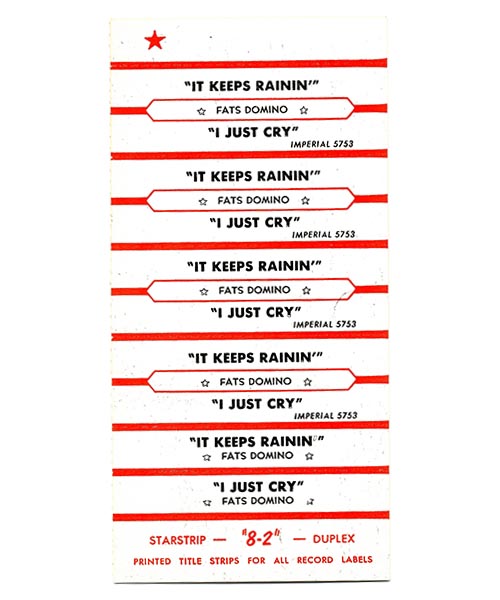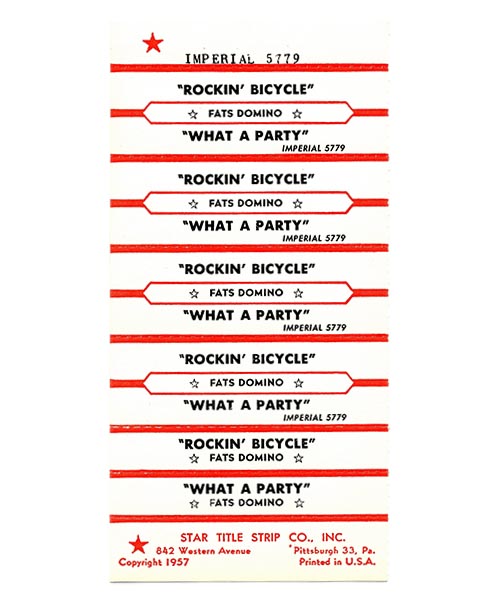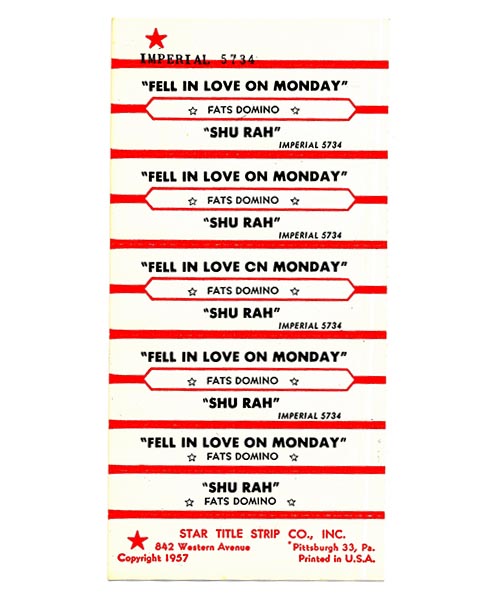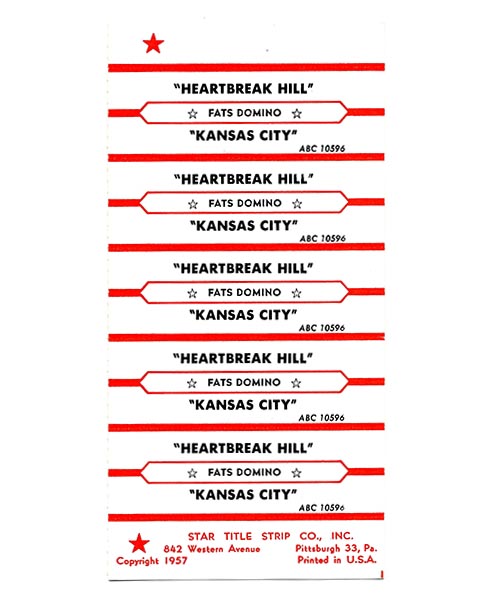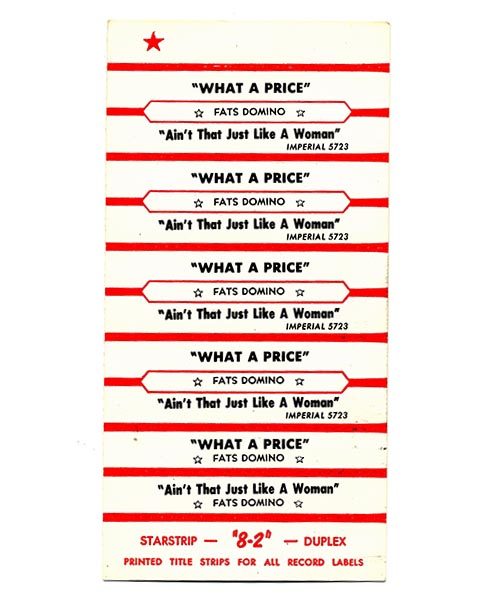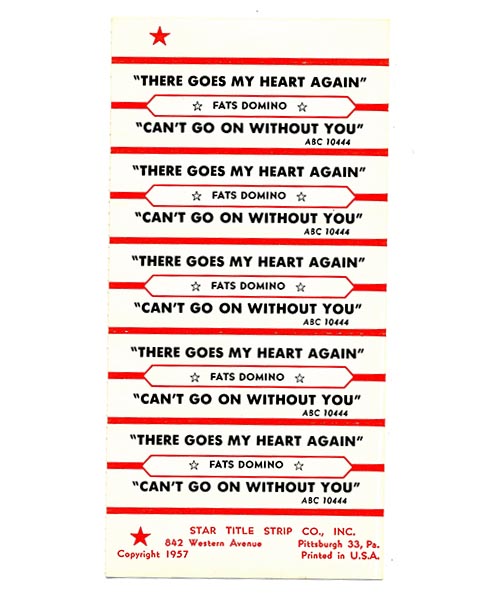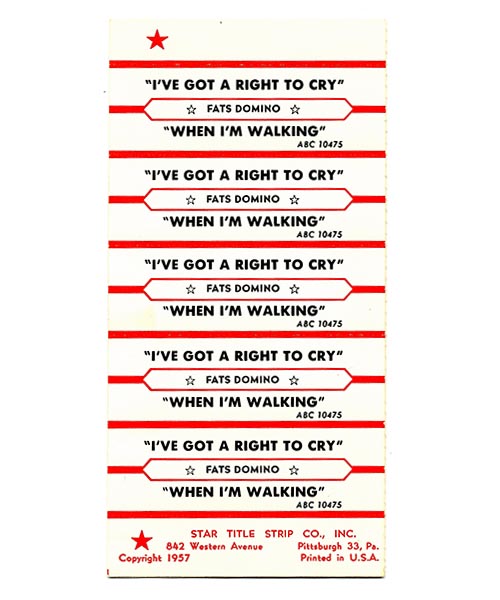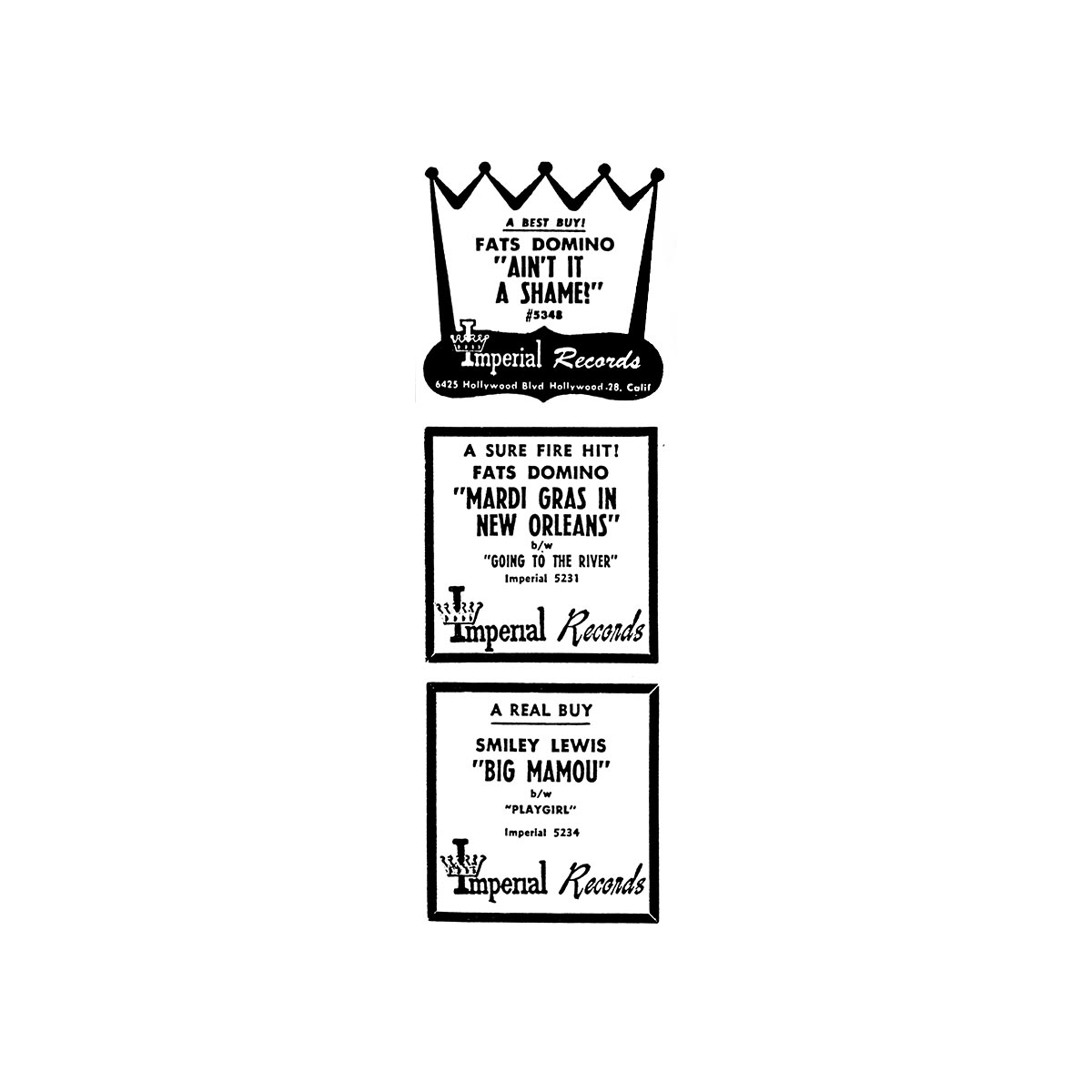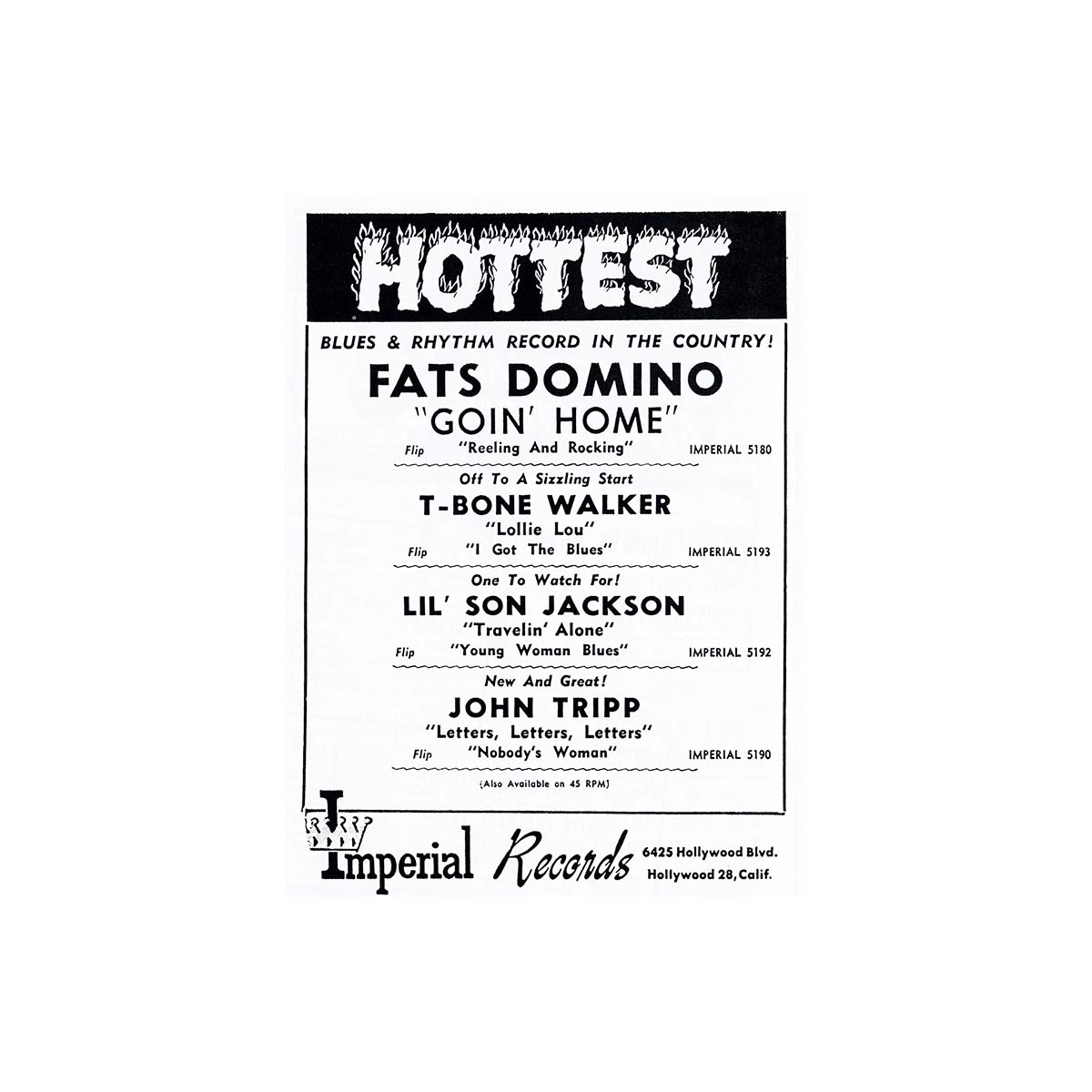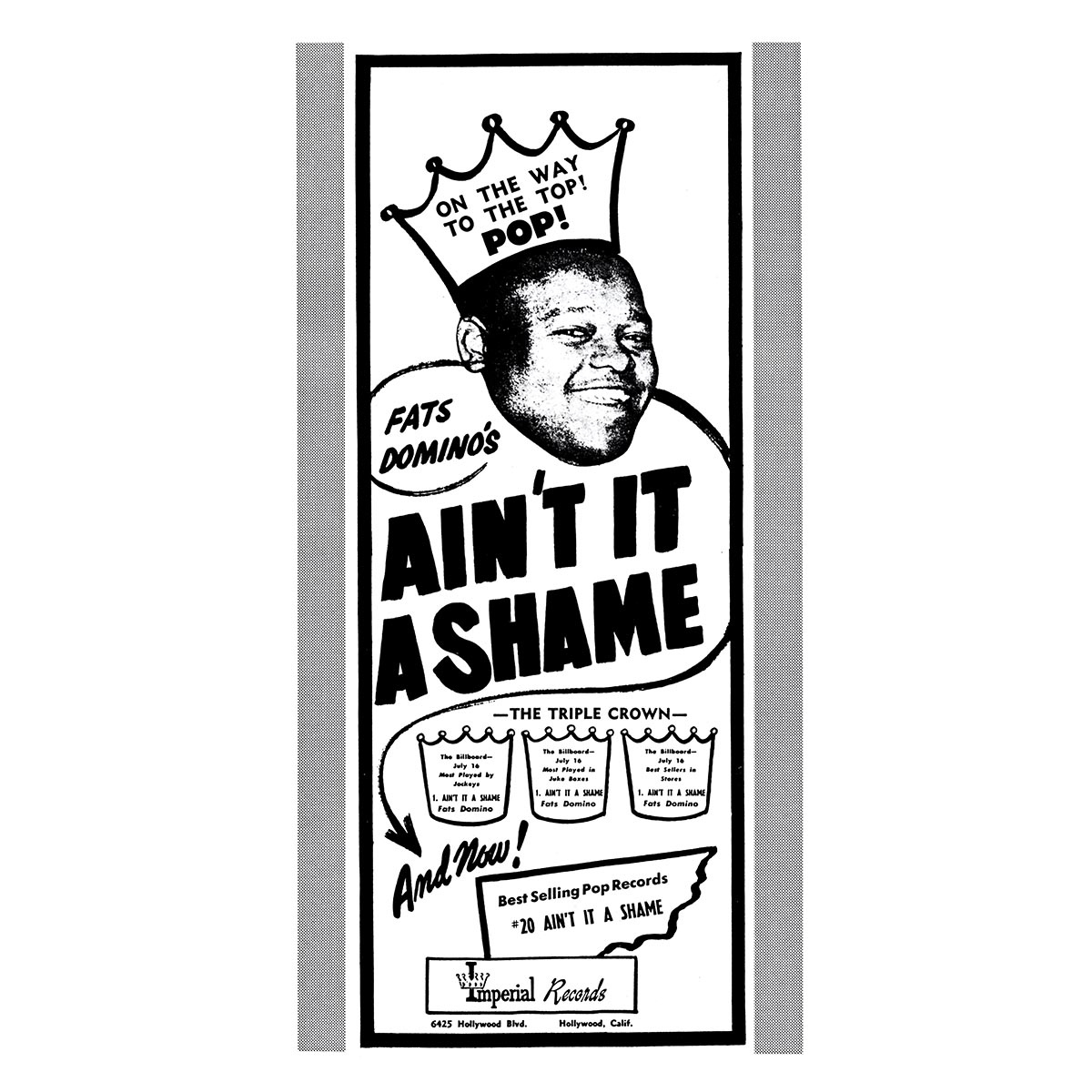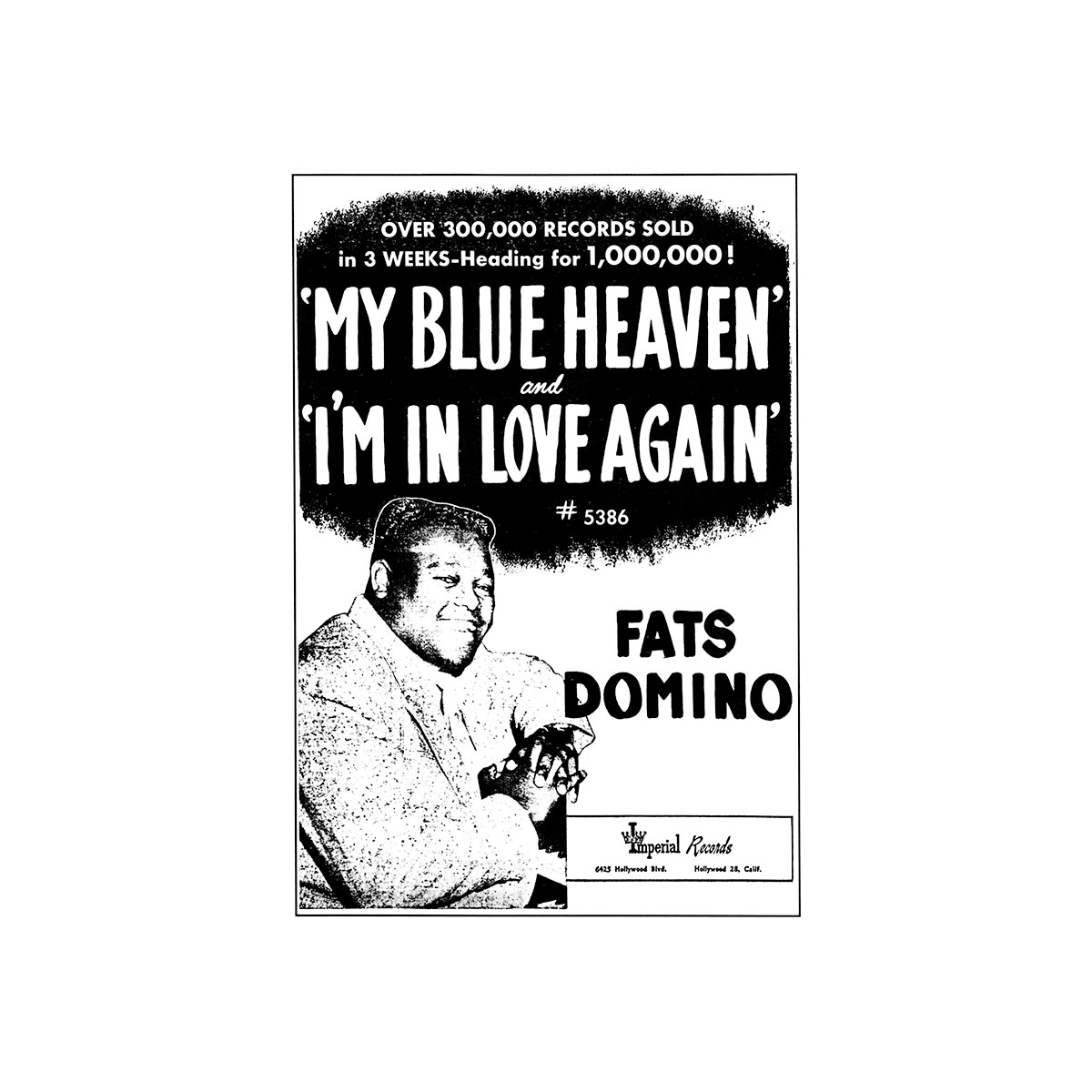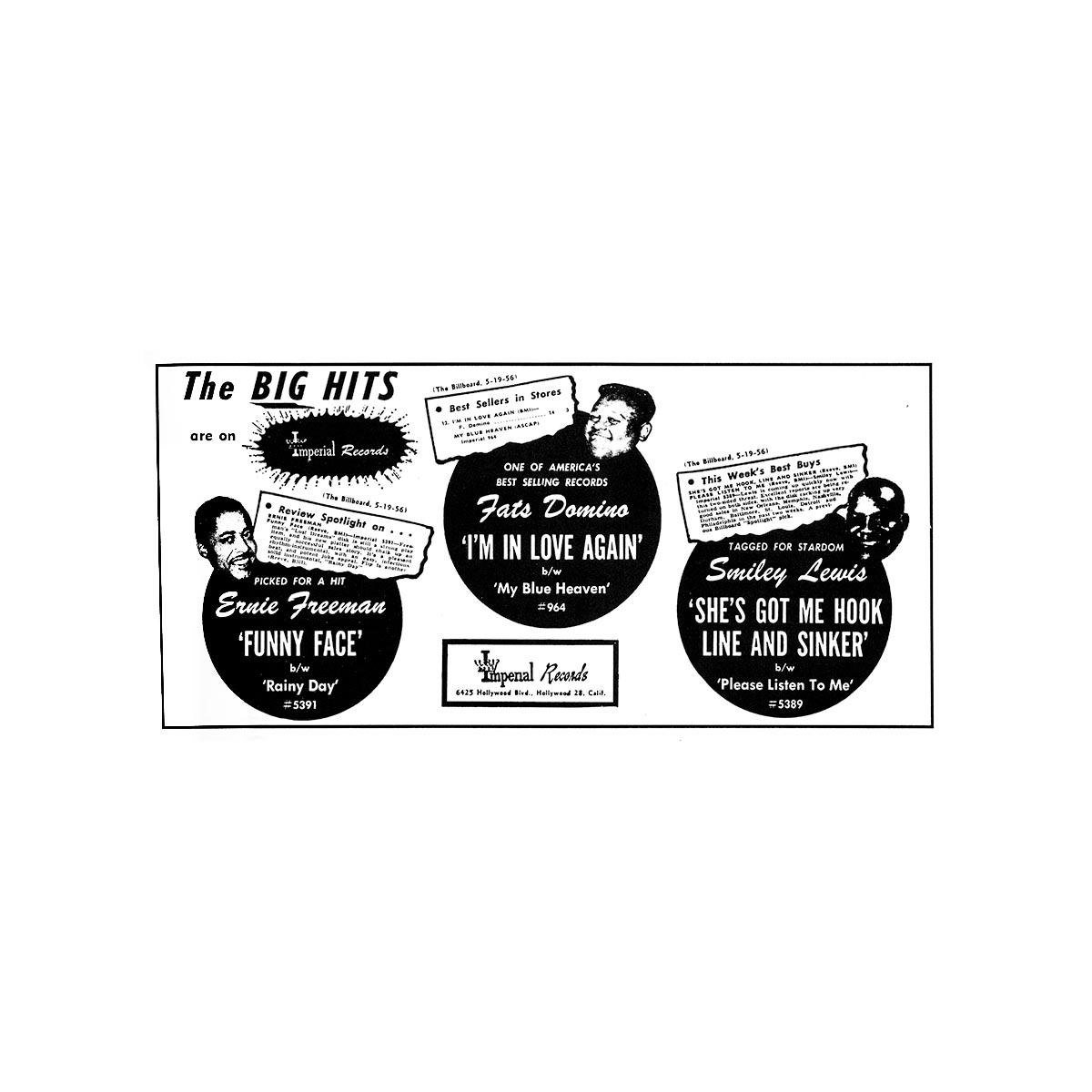Jukebox Tabs for Fats Domino songs, 1957.
The Billboard Charts
The charts were an important part of the musical landscape of the 1950s. Billboard had separate lists of top-selling records for different groups of people, known as charts. Billboard would measure record sales, radio airplay, and jukebox favorites. “Race records” in the 1940s was the chart for music marketed to African-American audiences, whereas the “pop” chart measured sales of music that was marketed to white audiences.
Between 1949 and 1950, the term “race records” was replaced by “rhythm and blues” (eventually shortened to R&B) but the concept remained the same. However, music from the R&B charts began to cross over into the pop charts as white audiences became interested in African-American music.
Domino was a particularly successful crossover artist. Many R&B musicians such as Chuck Berry and Little Richard had singles rise on the pop charts, but Domino greatly outsold them with over sixty songs charting on Billboard’s top 100.
Rather than trying to push unknown songs, many labels used large advertisements to showcase their success. Imperial would put out larger ads with more pictures for their stars and their hits, while lesser known artists and singles would have a smaller presence. Many releases would have an early ad in the smallest size, and then subsequent ads would be larger to highlight the record's charting success.

